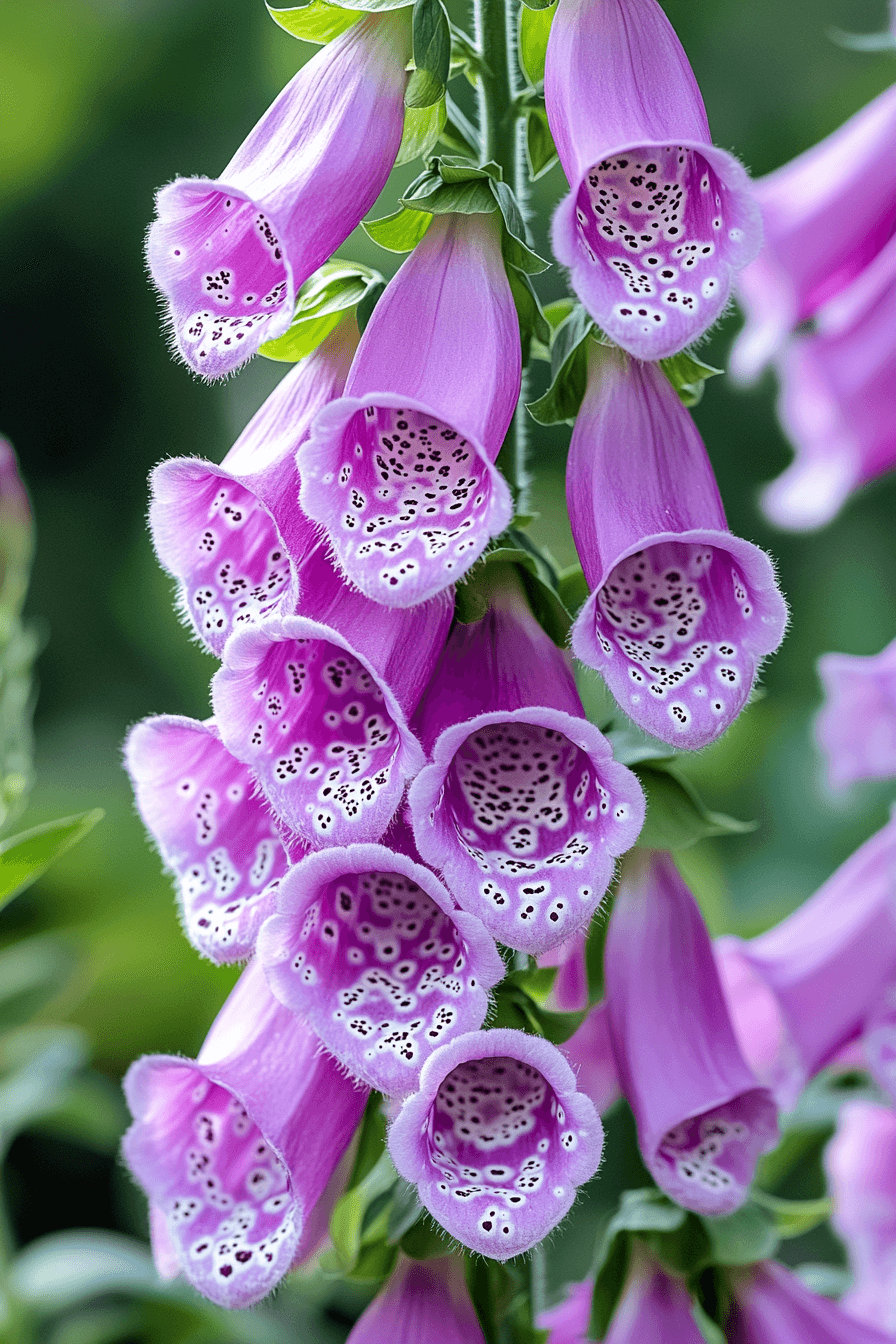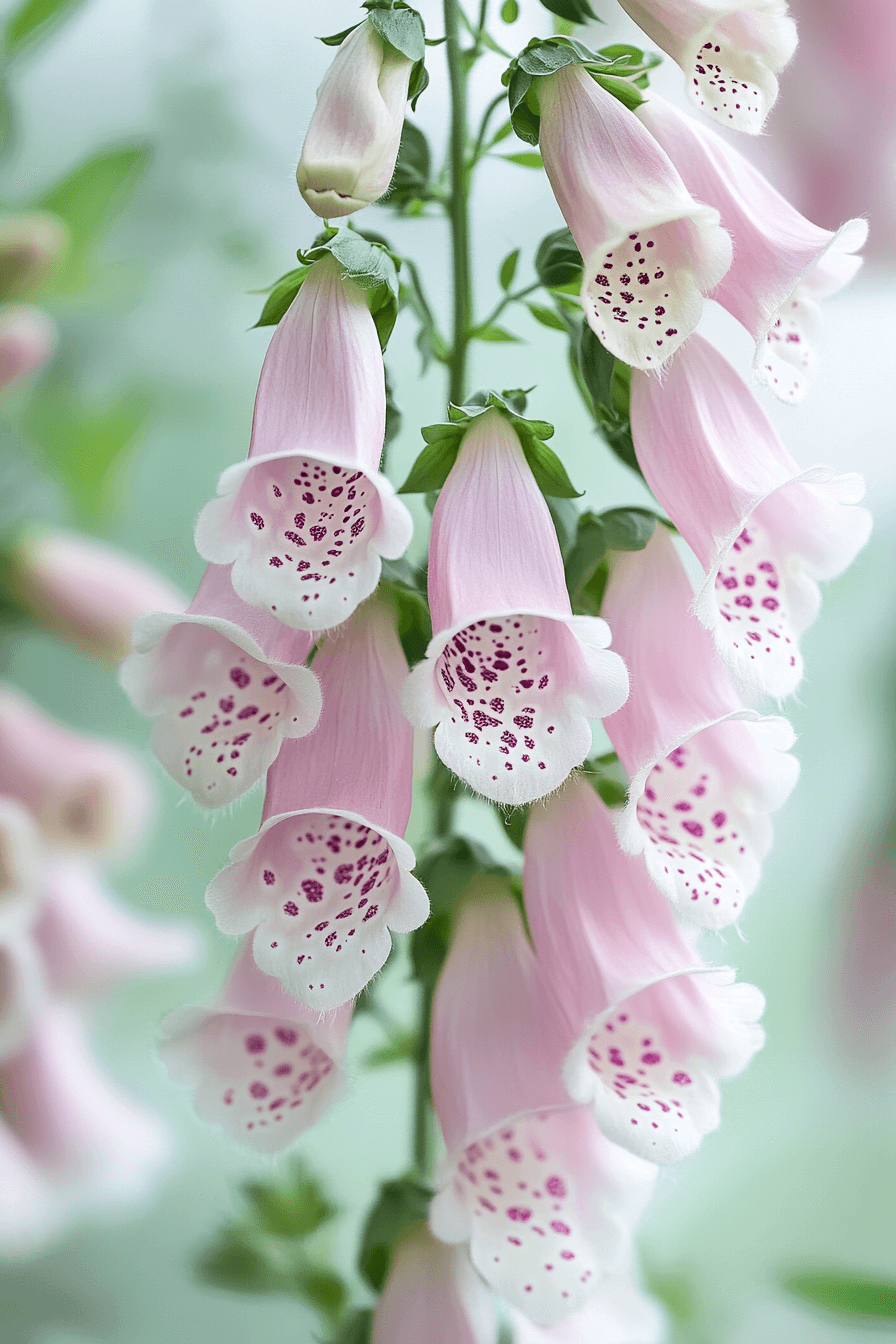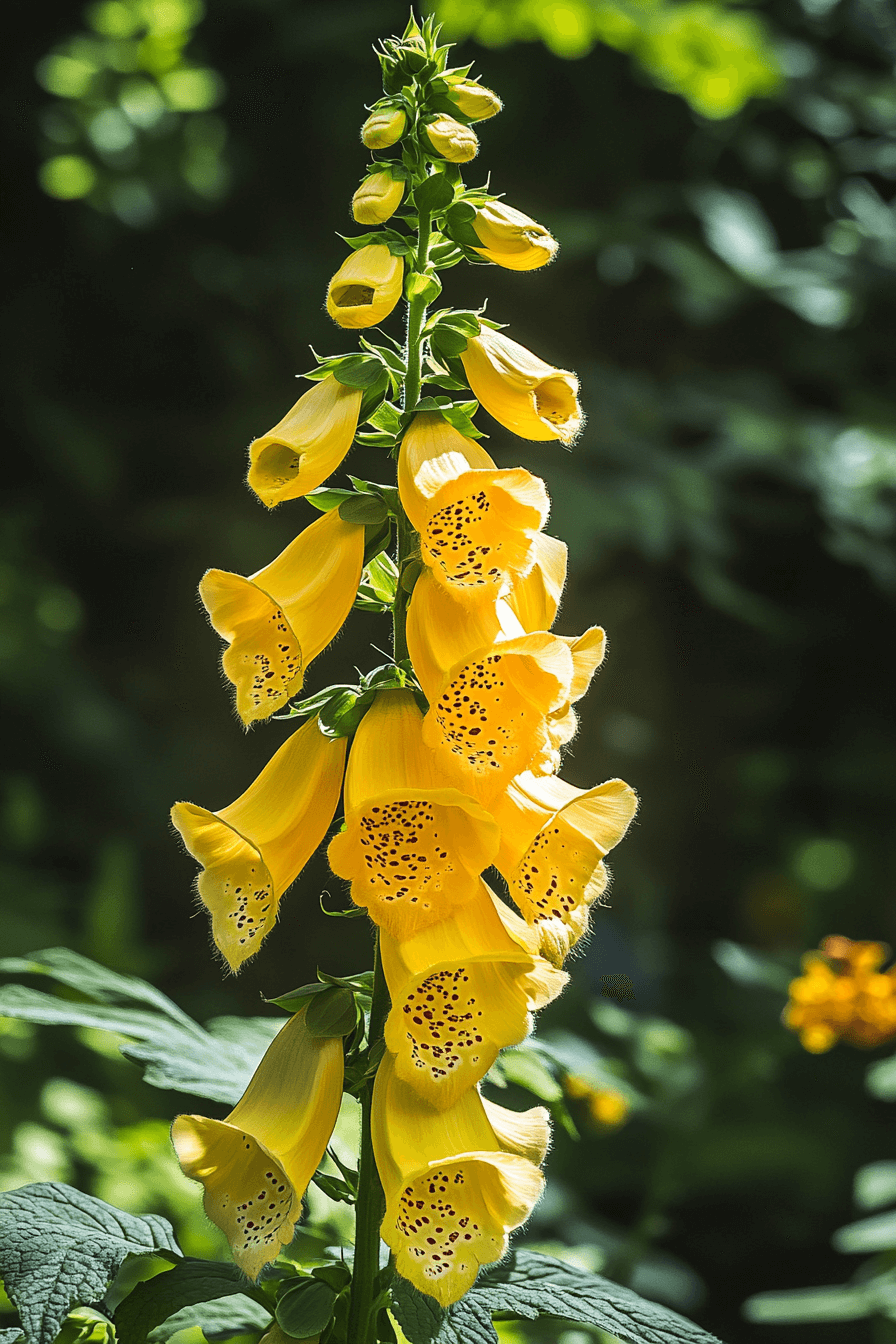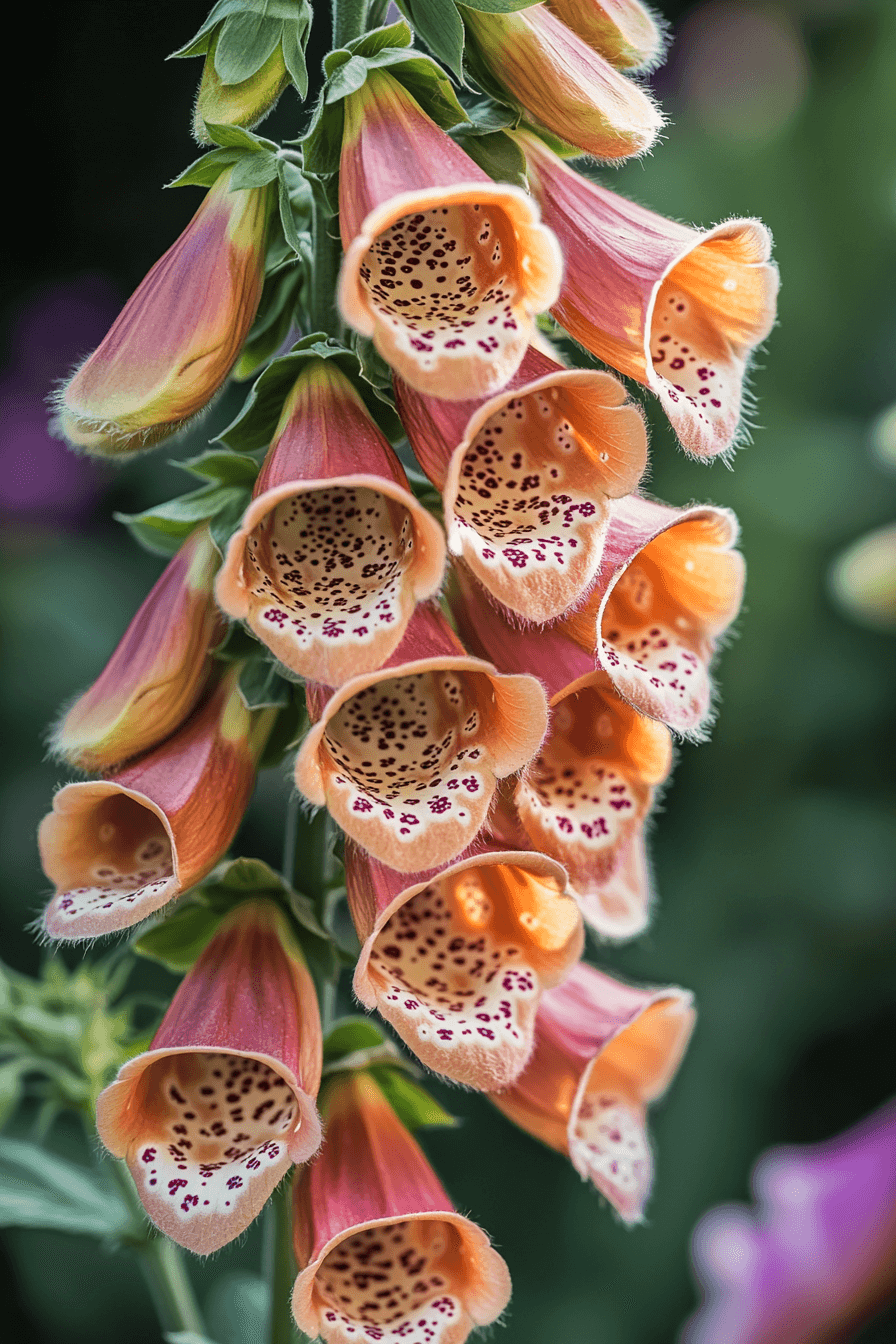A Gentle Guide to Foxglove Varieties
In the quiet sanctuary of my garden, where light drapes itself softly over each leaf, the Foxglove (Digitalis) stands as a whispered poem—fragile yet fiercely alive. These bell-shaped blossoms, cloaked in gentle colors and dotted with delicate freckles, have become more than flowers to me; they are companions in the journey of becoming—mirroring the soft strength and tender resilience we all carry within.
Whispering Purple: Digitalis purpurea (Common Foxglove)

Purple like the fading light of dusk, the Common Foxglove speaks softly of courage wrapped in vulnerability. Each spotted bell is like a quiet constellation, reminding me that even in moments of uncertainty, there is an authentic power in simply blooming as you are.
Thriving best in dappled shade and moist, rich soil, this species is often the first to greet spring’s arrival. It teaches us that new beginnings—though delicate—can carry a fierce tenacity, just like the gentle pulse of a woman’s heart ready to rise.
Care Tip: Water regularly to keep soil moist but well-drained, and provide partial shade to protect delicate blooms from harsh afternoon sun.
The Elegant Hybrid: Digitalis × mertonensis (Merton Foxglove)

Bathed in soft blush pink, the Merton Foxglove is a tender fusion of histories and hopes—standing tall as a bridge between tradition and transformation. Its larger, graceful flowers open wide with gentle speckles, embodying patience and enduring beauty.
This hybrid, blooming generously over long weeks, feels like a metaphor for soft feminism: a quiet revolution where grace and strength intertwine, and resilience blossoms in vulnerability.
Care Tip: Fertilize lightly during the growing season and deadhead spent flowers to encourage extended blooming.
Sunshine in Bloom: Digitalis grandiflora (Yellow Foxglove)

The Yellow Foxglove radiates warmth like golden sunlight caught in petals. It feels like laughter echoing through a sunlit garden—a bold invitation to claim space, to shine, to radiate joy as an act of gentle defiance.
Its bright, open bells remind me that embracing our inner light is not only healing but revolutionary—a beautiful rebellion against a world that too often asks us to dim our brilliance.
Care Tip: Prefers well-drained soil and can tolerate more sun than other foxgloves; watch for powdery mildew in humid conditions.
The Rustic Charm: Digitalis ferruginea (Rusty Foxglove)

Deep and earthy, the Rusty Foxglove brings a rich, almost whispered story—like embers glowing in twilight. Its rusty, copper-hued flowers speak of grounded strength, of beauty born from hardship and the courage to stand out.
Much like embracing every shade of our identity, this uncommon variety teaches us that true power often resides in what is unconventional, mysterious, and unapologetically ourselves.
Care Tip: Plant in full to partial sun with well-draining soil; prune after flowering to promote fresh growth.
Reflections on Foxglove and Feminine Growth
Foxglove’s dual nature—its enchanting beauty paired with its potent toxicity—feels like a poetic reminder of boundaries and self-respect. Just as these flowers command attention yet require careful handling, women’s softness holds depth, wisdom, and unyielding strength beneath the surface.
In nurturing these blossoms, I find myself invited to honor my own rhythms, to cultivate a space where vulnerability and power coexist. Their gentle bells call to pollinators, and I hear their call within me—a call to rise with kindness, conviction, and quiet revolution.
How to Care for Your Foxglove
Welcoming Foxglove into your garden means inviting both beauty and mindful care. They flourish in well-drained, organic-rich soil with partial shade—much like how we flourish when given room to breathe and grow.
As biennial or short-lived perennials, they often spend their first year gathering strength, only to burst into bloom the next. With gentle hands and patient hearts, we can nurture their magic and in turn, find healing in their quiet presence.
Frequently Asked Questions (FAQ)
Q: Are Foxgloves toxic?
A: Yes, Foxgloves contain compounds that can be toxic if ingested. Handle with care, keep away from children and pets, and enjoy their beauty responsibly.
Q: Can Foxglove grow in full sun?
A: While Foxglove prefers partial shade, some varieties can tolerate full sun if the soil remains moist and well-drained.
Q: How long do Foxgloves bloom?
A: Most Foxgloves bloom for several weeks in late spring to early summer. Hybrids like Merton Foxglove can have an extended blooming period.
Q: Are Foxgloves perennials or biennials?
A: Foxgloves are typically biennials, meaning they grow foliage their first year and flower the second, though some varieties act as short-lived perennials.
Q: How do Foxgloves support pollinators?
A: Their tubular flowers attract bees and hummingbirds, making them excellent plants for supporting local ecosystems.
May your garden—and your spirit—flourish with the quiet strength of these enchanting blooms.
— Jojo Len
🌸 Keep Wandering Through the Garden
- A Gentle Guide to Lavender Varieties: Perfect Choices for Balcony, Aromatherapy & Garden Bliss
- Five Tender Sunflowers for Small Gardens & Big Feelings
- A Gentle Guide to 8 Classic Rose Varieties & Care Tips for Slow Living Gardeners
- A Gentle Guide to Cosmos: Three Varieties for Joyful, Wild Gardens
- Gentle Blossoms: A Zinnia Guide for Your Soulful Garden
- A Gentle Guide to Marigold Varieties
- A Gentle Guide to Petunia Varieties
- A Gentle Guide to Pansy Varieties: Faces of Resilience
- A Gentle Guide to Viola Varieties
- A Gentle Guide to Tulip Varieties
- A Gentle Guide to Lily Varieties
- A Gentle Guide to Chrysanthemum Varieties
- A Gentle Guide to Calendula Varieties
- A Gentle Guide to Nasturtium Varieties
- A Gentle Guide to Cornflower Varieties
👉 Explore more at jojolen.shop
- Pinterest: @GrowandGathertogether | Instagram: @jojolen6666
- Images © jojolen.shop — credit if shared. No commercial use without permission.
